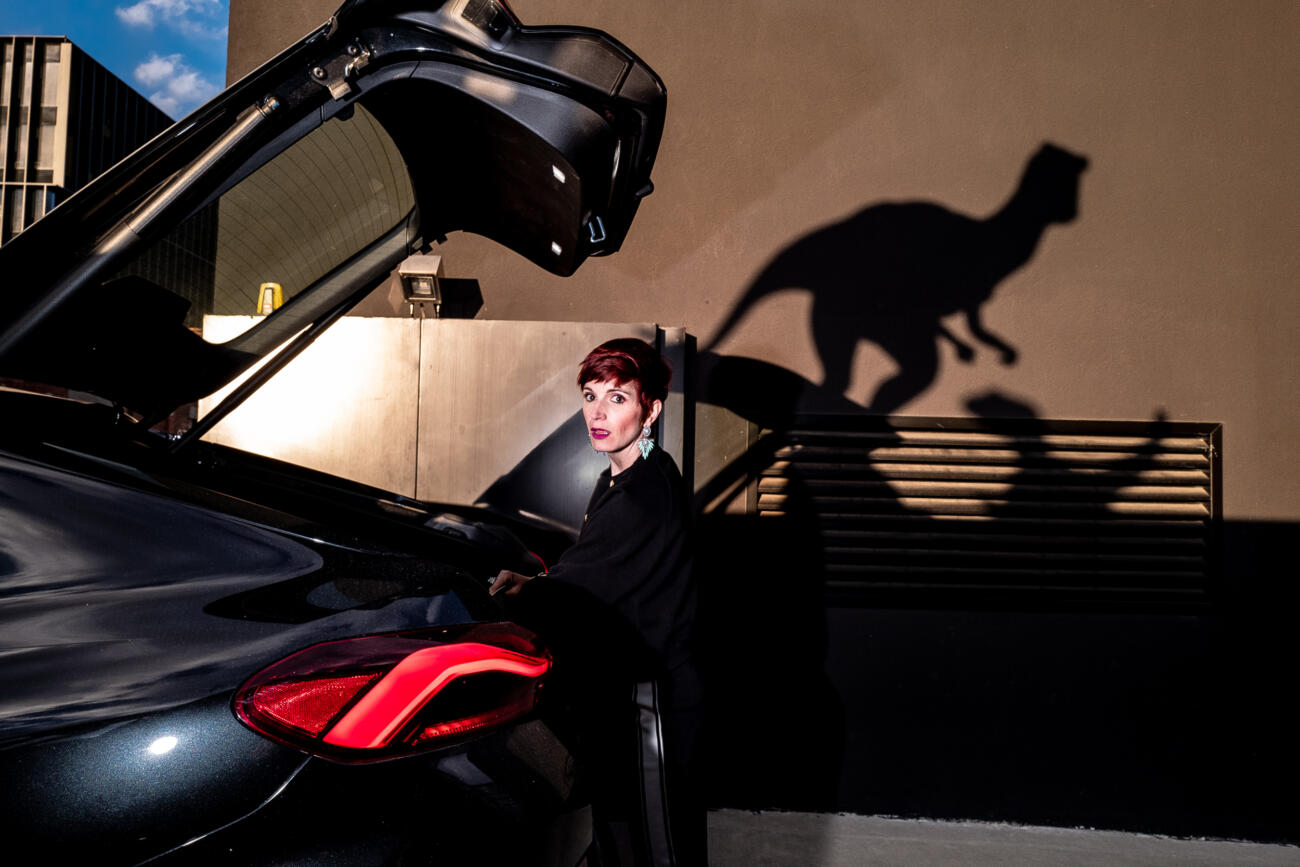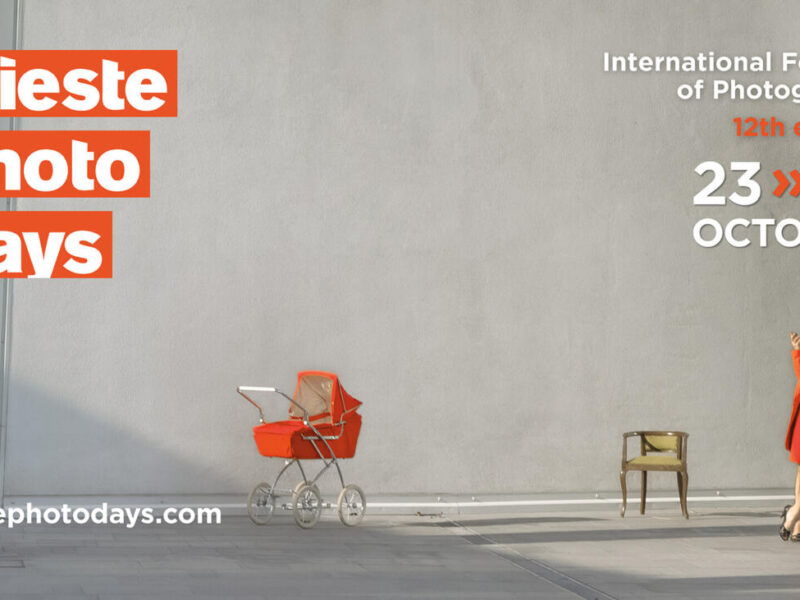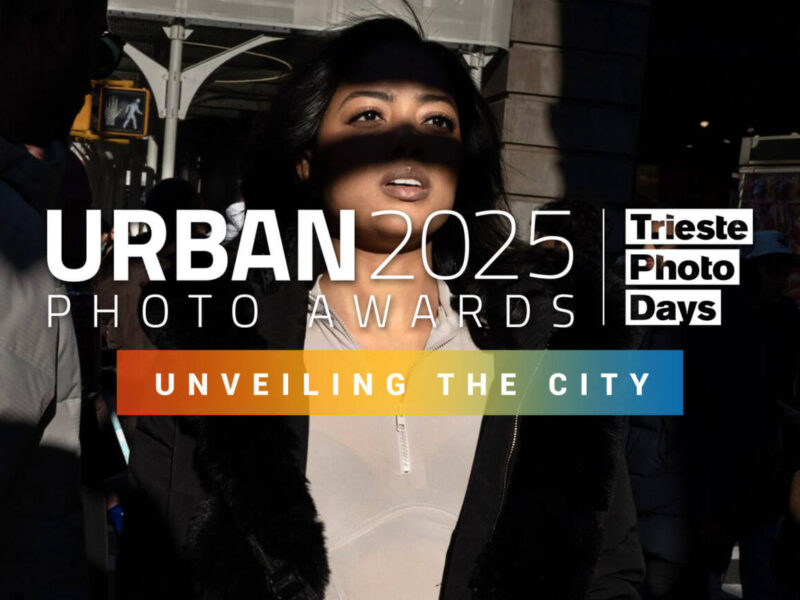Jurassic Street: interview with Massimiliano Faralli / #URBANinsights
#URBANinsights are a series of exclusive interviews and insights dedicated to the winners of URBAN Photo Awards. Let’s start this new season of #URBANinsights with Massimiliano Faralli, overall winner of the 2022 edition of the contest, chosen by Nino Migliori.
Thank you for taking the time to speak with us and congratulations on being the overall winner of the URBAN Photo Awards 2022 with your Jurassic Street picture. The picture stirs memories of the famous movie. She looks scared. How did this picture come about?
Thank you for the invitation; it’s nice to be in the pages of this magazine.
A picture always comes from different factors but there are some scenes that deserve to be “experienced” photographically. For this picture creative tenacity has played a very important role. As soon as I saw the scene, I simply tried to recreate the image. In such cases you don’t have to stop, you must find out the perfect angle, then instinct, steadiness, and a little bit of luck, bring you there, in front of everything. You just have to take the photo.
Nino Migliori said that your photo Jurassic Street tells “a story in a possible play between fiction and reality”. How do yourself see it?
Reading them, I can say that Nino Migliori’s words could not tell the synopsis of the imagine any better, a series of situations and references that fill the frame. The aim of the decisions we take when we compose the frame is to realize an imagine that conveys the sensations we felt while realizing the shot or that leads the viewer to focus his or her attention on certain details; in other words that helps to intensify the message we want to give. This aspect is enhanced when there is order and balanced. This is how I see this photo: everything looks in the right place, without distractions.
As a practicing architect, who works with functional, structural, efficient, and sometimes minimal forms, how do you approach the chaos of the streets when you decide the content of your photos and compose them?
My work supports and helps my creativity. However, for me being a photographer means to be attracted by people’s energy, in whatever forms this can manifest itself, to be charged by the flow of the instant, until you become a central part of it.
You live in Prato. Have that place and the people who live there inspired and influenced your photographic vision? If so, how?
For the content of my images and the way I approach them, I have always looked for contests outside my city, situations, and places that fit my way to feel the things and that shaped my photographic vision. But the place where I live increase my curiosity and brings my interest closer to new photographic paths.
Do you see yourself composing photos in a different way at dusk/dark than when you compose them in the morning, in the sense that your decision on certain scenes and subjects changes in order to reach a specific visual goal?
I’m instinctive. I think that it is difficult to think of photographing to communicate something, especially if the action of the shot is accomplished in a few seconds: the result of a shot is also the result of the relationship that you establish with the people that observe your work. However, over the years I have learned what interests me and what I like: I choose scenes, moments, and subjects that I think are important for my project or that can improve my personal visual language.
There is a strong human element in many of your images that depict urban spaces, realized with the flash. Is there a conscious decision in choosing some people to photograph and not others?
What do you search in the people and in the faces, you decide to photograph?
I try to feel what people are feeling or experiencing in that moment and when I fail in this the photo loses its interest.
Empathy is the emotion that drives most of my work and that helps me in my decisions.
When I take a photo, I move around my subjects, I find out the best angle to capture and I shoot everything in few seconds. They, of course, see me, follow my action, and create with me a temporary relationship that can lead to different conclusion.
Affordable cameras and social medias have made it easy for everyone to take photos and share them. Has this changed what you decide to photograph and how to produce distinct photos that stand out of the crowd?
Our experiences and, often unconscious personal preferences, even outside the field of photography, influence and distinguish our way of taking photos and how we see the thinks around us, not the rest.
Where do you find the inspiration that informs and forms your photographic eye: movies, books, or other photographers?
I try and observe constantly new techniques, new visions, and I follow what I like and what takes my curiosity.
I think that if we can take inspiration from what we love, from art, from music or from cinema, the more interested we become in the world that surrounds us, the more interesting our images will be.
So, I try to follow what my personal taste or mood, in a particular moment, leads me toward.
What would you say to someone who wants to enter in the world of photography? How should he or her approach it and why?
I would suggest studying the work of other photographers, those who you love or inspire your curiosity, through books, exhibits, workshops or simply by visiting galleries. Be inspired by whatever you like and learn by other’s work, but the find your path and search your style.
Where do you see yourself as a photographer in two years and what do you hope that the visitor brings with him after having seen your photos?
Lately I have kept following my path, but I have also started to experiment other scenarios.
I like to order my works and I think that photographic design is the form and the dimension that will follow most of my work from now on.
The action of the shot produces in me energy and happiness, I would be happy to transmit to the visitor, with my photos, these sensations.







